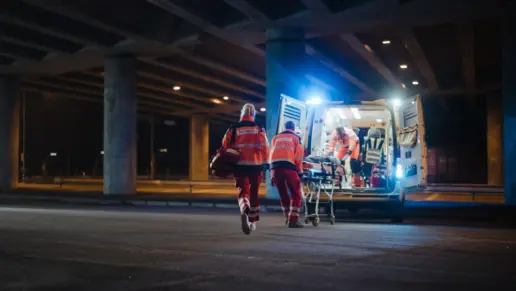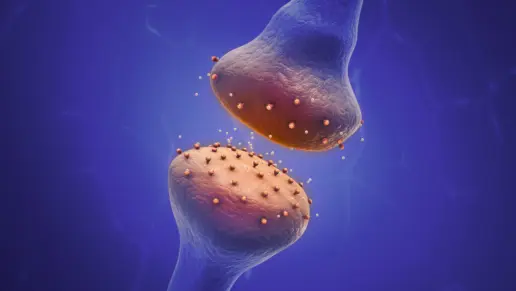Vicodin is a commonly prescribed medication that’s used to treat moderate or severe pain. This may include short term use to manage discomfort following surgery or an injury.
If you’re wondering, “Is Vicodin an opioid?”, the answer is yes. It is a prescription opioid used to treat pain. It is made in a lab from natural opioids and is much like morphine in producing opiate effects.
The Vicodin is formed by combining the generic drug, hydrocodone, with acetaminophen. Thus, the answer to the question “Is hydrocodone Vicodin?” is both yes and no.
Thus, Vicodin is a combination of the two. The difference between Vicodin vs. Norco is that Norco has a bit more acetaminophen than Vicodin. Another prescription opioid drug is called Percocet. The difference between Vicodin vs. Percocet is that the latter has the opioid oxycodone, not hydrocodone.
Is Vicodin Addictive?
The Vicodin drug is very addictive because it can make people feel very relaxed or “high.” Hydrocodone is listed on the Drug Enforcement Administration’s (DEA) Schedule II.
This means that it has a high potential for abuse and can cause dependence. Controlled drugs like hydrocodone are regulated in terms of how they are manufactured and dispensed.
Vicodin is one of the more commonly abused opioid medications by adults. The 2023 National Survey on Drug Use and Health also found that 3.1% of people age 12 or older (8.9 million people) misused opioids in the past year and 42.8% of those people (over 3.8 million people) misused hydrocodone which is significantly more than any of the other prescription opioids.
Knowing the signs of Vicodin addiction is the first step toward seeking help.
Signs and Symptoms of a Vicodin Addiction
Vicodin addiction is diagnosed as opioid use disorder (OUD) or the continued use of the drug despite it causing problems in the person’s life.
A formal diagnosis can only be made by a healthcare professional but you can look for signs and symptoms if you are concerned about your or a loved one’s use.
Signs and symptoms of Vicodin addiction include:
- Taking Vicodin in amounts larger than intended or for longer than intended
- Having an ongoing desire to cut down or stop Vicodin use
- Unsuccessfully quitting or controlling Vicodin use
- Spending a large amount of time using Vicodin or recovering from its effects
- Feeling cravings to use Vicodin
- Continuing to use Vicodin despite it causing problems in relationships
- Neglecting responsibilities due to Vicodin use
- Abandoning important social or occupational activities to make time for opioid use
- Repeatedly using Vicodin in physically hazardous situations, like driving
- Continuing to use Vicodin despite it causing or worsening a physical or psychological condition
- Developing a tolerance to Vicodin and needing higher doses to feel the same effects
- Experiencing withdrawal when use is stopped or significantly reduced or using Vicodin to avoid withdrawal
A provider might diagnose OUD if two or more of the above symptoms are present over the past 12 months.
The more symptoms that are present, the greater the severity of the OUD. However, even if one of the symptoms is present then seeking professional assistance may help prevent Vicodin misuse from worsening and reduce potential negative effects.
Vicodin Withdrawal and Overdose
If you ask “How long does Vicodin stay in your system?,” the answer is several hours to several days, depending on factors like your weight, gender, metabolism and how long you have been taking the drug.
For people who have been using Vicodin consistently for at least a few weeks, this means that several hours to several days after you stop taking the drug your body may start to experience Vicodin withdrawal.
Withdrawal occurs when the body adjusts to the absence of a substance it has become dependent on, leading to physical and psychological symptoms as it eliminates the drug. Uncomfortable symptoms occur as it is doing so because the body is adjusting to functioning without the substance.
Signs of Vicodin withdrawal include:
- Yawning
- Depressed mood
- Nausea, vomiting, or diarrhea
- Muscle and bone aches
- Profuse sweating
- Having a runny nose or shedding tears
- Fever
- Insomnia
Vicodin withdrawal symptoms are so uncomfortable that some may continue to use the drug to avoid withdrawal. Yet, using Vicodin in increasing amounts or for a longer length of time increases the risk of overdose.
An overdose means that there is more of the drug present in the body than the body can handle. Vicodin produces depressant effects so an overdose of Vicodin can lead to slowed or stopped breathing which can cause permanent brain damage, coma or death.
The risk of overdose is even greater when Vicodin is taken with other drugs. Combining Vicodin with another substance that also causes depressant effects such as alcohol, benzodiazepines or other opioids can cause those effects to be more than doubled which can quickly lead to an overdose.
The effects of combining Vicodin with stimulants can be unpredictable. It can lead one drug to mask the effects of the other. As a result, the person may think that Vicodin is not affecting them and therefore take more which makes it easier to overdose.
Vicodin overdose symptoms include:
- Limp body
- Pale or clammy skin
- Purple or blue nails or lips
- Vomiting
- Gurgling noises
- Inability to speak or be awakened
- Slowed or stopped breathing or heartbeat
If you or someone you know is dealing with OUD then having opioid overdose medication handy can help save a life. Naloxone is a medication that can reverse an opioid overdose and anyone can use it without medical training or authorization. You can get it in an injectable form or as a nasal spray. You cannot use it on yourself so tell loved ones that you have it in case of an overdose.
To use naloxone:
- Give one dose if you suspect someone is overdosing on Vicodin
- Wait two to three minutes to see if normal breathing returns
- If they are not yet breathing normally, give a second dose
Naloxone will not harm the person if they are not overdosing on opioids so it’s best to use it even if you suspect they are because it could save their life.
The best overdose situation is one that never occurs. The appropriate treatment for Vicodin addiction offers the best chance of avoiding overdosing and starting on the path to recovery.
Where Can I Find Information About Vicodin Abuse Treatment?
Numerous resources are available that can help connect you to addiction treatment programs. You can start with your primary care provider (PCP). They know your medical history so they can make an initial substance use disorder diagnosis and treatment recommendations.
They may also be able to connect you with rehab programs in your area. In addition, having your PCP as part of your treatment team can allow for continued care because they may be able to manage any addiction medication post-rehab treatment.
Local peer support groups like the 12 step group Narcotics Anonymous (NA) are also a good place to learn about rehab programs. You can attend these group meetings no matter what stage of readiness to seek treatment you are in. It is a place to garner support from others who understand your situation—they may also be able to provide information on local treatment programs.
Numerous resources are available that can help connect you to addiction treatment programs. If you’re also trying to understand whether insurance can help cover detox or treatment, you can learn more about rehab options and compare coverage details before choosing a program.
Additional resources include:
- The Substance Abuse and Mental Health Services Administration (SAMHSA) national helpline: Call 1-800-662-HELP (4357)
- National Council on Alcoholism and Drug Dependence, Inc. (NCADD): Call 1-800-NCA-CALL (622-2255)
- National Institute on Drug Abuse (NIDA): Call 1-301-443-1124
- Narcotics Anonymous: Call 1-800-NCA-CALL (622-2255)
- Rehab.com: Call 1-800-784-1361 or go here for their online rehab locator
What Are the Treatment Options for Addiction to Vicodin?
Various care options are available for you or your loved one depending on your needs. These are described below.
Medical Detoxification
Medical detoxification or medical detox is often needed for someone who has a physical dependence on Vicodin. It is the process of withdrawal that is overseen by medical professionals. They help to minimize the withdrawal effects of Vicodin by providing supervision and administering medication.
It is important to note that medical detox is not a long-term addiction treatment. It is the process of stabilization to help prepare someone for treatment.
Inpatient Treatment
Inpatient treatment involves living at the rehab facility and receiving 24 hour care. Inpatient rehab is suited for someone with a severe addiction or who also has a co-occurring disorder. A multidisciplinary care team provides comprehensive services such as psychotherapy, medication management,and case management.
Outpatient treatment
Outpatient rehab involves receiving OUD treatment while living at home and commuting to the facility. Outpatient programs are best suited for someone who lives in an environment that is drug free and supportive of recovery. For instance, partial hospitalization (PHP) is one form of outpatient treatment suited for someone with a more severe addiction but who does not need round the clock care.
Intensive outpatient programs (IOP) are for someone with a less severe addiction or who has already completed an inpatient treatment program. They also tend to offer programs on evenings and weekends for those who need to work or attend school while in treatment.
Lastly, outpatient counseling is for someone with a mild addiction or addiction in remission and involves meeting with a therapist once or twice per week.
Medication-Assisted Treatment
For Vicodin addiction, medication-assisted treatment (MAT) is often a part of rehab. Medications such as buprenorphine, methadone and naltrexone work to reduce cravings and help keep the person in treatment and recovery.
Aftercare
Aftercare is important to sustain progress made in rehab and help prevent relapse. One type of aftercare is a sober living home. This is a drug-free community that helps a person transition from inpatient rehab to independent living.
Another example of aftercare is participation in peer support groups like Self Management for Addiction Recovery (SMART). Finally, ongoing outpatient counseling is also important for the continual development of coping skills.
The various care options may seem overwhelming but an intake clinician at a treatment facility provides an assessment and recommendations to help you take the next step toward recovery.
Reach Out Today
Please call us to speak with one of our support specialists who can help you locate a suitable rehab treatment program. It is never too late to seek help, and recovery is possible.
As you explore available programs or compare levels of care, you can also learn more about rehab options to find treatment centers and services that match your needs.
Addiction Centers That Treat Opioid Addiction
Finding facilities near you…




